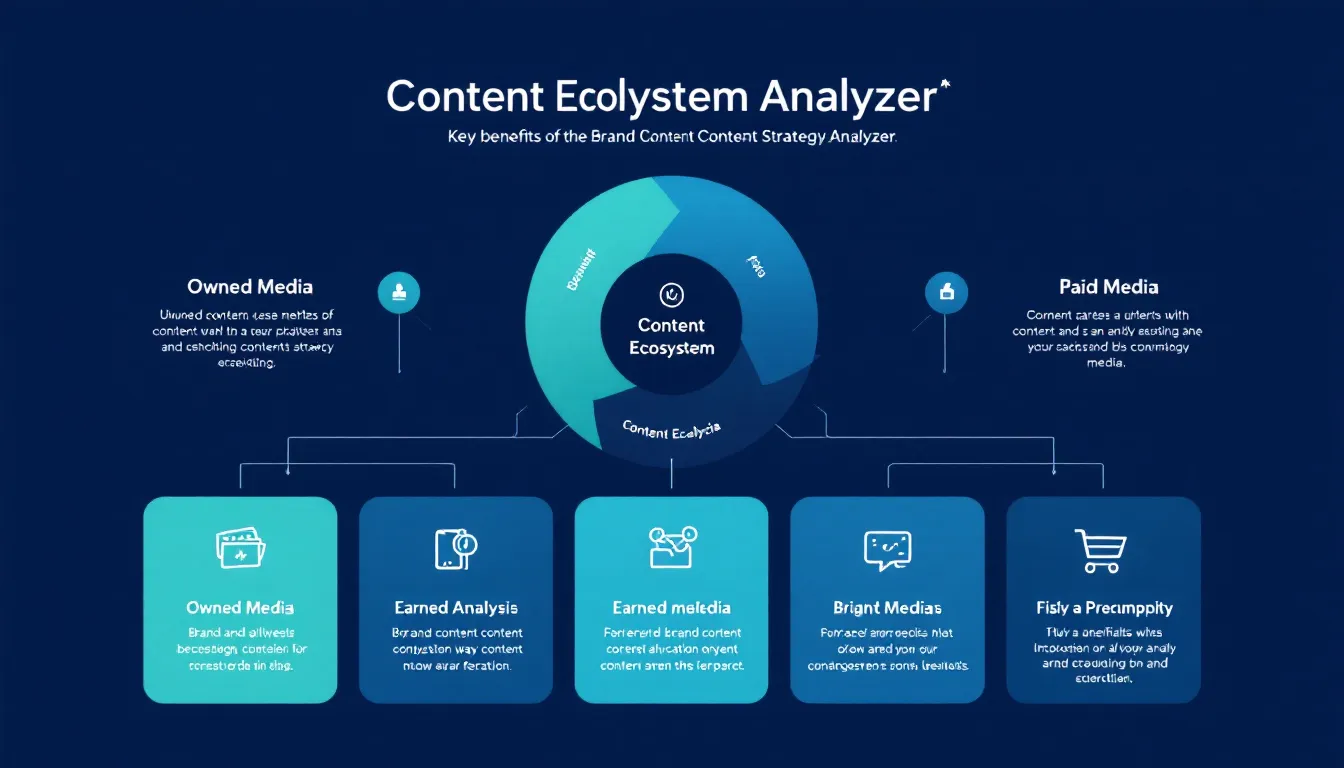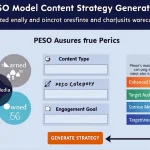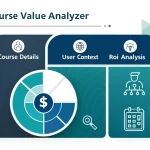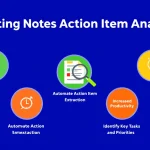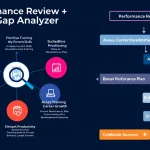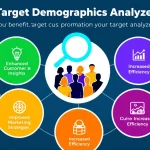Is this tool helpful?
How to Use the Brand Content Strategy Analyzer Effectively
To conduct a comprehensive analysis of your brand’s content strategy, follow these steps to use the analyzer effectively:
Step-by-Step Guide
- Brand Name: Enter your brand name in the first field. For example: “Spotify” or “Airbnb”.
- Business Objectives: List your key business objectives clearly. Example 1: “Increase premium subscription base by 25%, expand into 5 new markets, enhance user engagement metrics”. Example 2: “Drive direct bookings by 40%, improve host retention rate, expand luxury property listings”.
- Content Channels: Detail all your marketing channels. Be specific about owned media (website, blog, mobile app), earned media (PR coverage, user reviews, social mentions), and paid media (PPC, social ads, influencer partnerships).
- Target Audience: While optional, providing detailed audience information enhances analysis accuracy. Include demographics, psychographics, and behavioral patterns.
- Time Frame: Specify the analysis period to contextualize results. This helps track seasonal trends and campaign effectiveness.
Understanding the Brand Content Strategy Analyzer
This powerful tool evaluates your brand’s content strategy across three crucial dimensions: owned, earned, and paid media channels. It analyzes the effectiveness of your content initiatives in relation to your business objectives while providing actionable optimization recommendations.
Core Analysis Components
- Content value assessment
- Channel performance evaluation
- Strategic alignment analysis
- Competitive differentiation review
- ROI potential assessment
Benefits of Using the Brand Content Strategy Analyzer
Strategic Advantages
- Comprehensive channel performance insights
- Data-driven optimization recommendations
- Resource allocation guidance
- Content gap identification
- Strategic alignment verification
Operational Benefits
- Time-efficient analysis
- Standardized evaluation framework
- Actionable recommendations
- Cross-channel performance comparison
- Historical tracking capabilities
Problem-Solving Capabilities
Channel Performance Optimization
The analyzer identifies underperforming channels and provides specific recommendations for improvement. For instance, if your owned media shows low engagement rates, the tool might suggest content format diversification or topic optimization strategies.
Content Strategy Alignment
By evaluating content against business objectives, the tool helps ensure your content strategy supports organizational goals. It highlights misalignments and suggests corrective actions.
Resource Allocation
Through performance analysis across channels, the tool helps optimize resource allocation for maximum ROI. This prevents wasteful spending on underperforming channels while identifying high-potential opportunities.
Practical Applications and Use Cases
Enterprise Brand Example
A global technology company used the analyzer to evaluate their B2B content strategy. The analysis revealed:
- LinkedIn posts outperformed other social channels
- Technical whitepapers generated highest lead quality
- Webinar content needed optimization
- Email nurture sequences required personalization
E-commerce Brand Example
An online fashion retailer utilized the tool to optimize their multi-channel strategy:
- Instagram Stories drove highest engagement
- User-generated content outperformed branded content
- Email segmentation needed refinement
- Blog content required better search optimization
Frequently Asked Questions (FAQ)
How often should I analyze my content strategy?
Quarterly analysis is recommended for most brands, with monthly reviews for specific campaigns or high-priority channels.
Can I analyze multiple brands simultaneously?
Yes, you can analyze multiple brands separately to compare performance and identify best practices across your portfolio.
What metrics are considered in the analysis?
The analyzer evaluates engagement rates, conversion metrics, audience reach, content relevance, brand alignment, and channel-specific KPIs.
How should I prioritize optimization recommendations?
Focus on recommendations that align with your primary business objectives and offer the highest potential ROI based on your resource constraints.
Can I use this tool for competitive analysis?
Yes, you can analyze competitors’ public-facing content strategies to benchmark performance and identify market opportunities.
How detailed should my business objectives be?
Business objectives should be specific, measurable, and time-bound. Include both quantitative targets and qualitative goals.
Should I include all marketing channels?
Yes, include all active marketing channels for a comprehensive analysis, even those with minimal current investment.
How does the tool handle international markets?
The analyzer can evaluate content strategy effectiveness across different markets and languages, providing market-specific insights.
Advanced Strategy Optimization
Content Synergy Analysis
The tool evaluates how different content types and channels work together to achieve business objectives. This helps identify opportunities for cross-channel optimization and content repurposing.
Audience Response Patterns
By analyzing engagement patterns across channels, the tool helps identify optimal content delivery strategies for different audience segments.
Investment Impact Assessment
The analyzer provides insights into the relationship between resource investment and content performance, helping optimize budget allocation across channels.
Implementation Best Practices
Data Preparation
- Gather comprehensive channel performance data
- Document current content strategy objectives
- List all active marketing initiatives
- Compile audience engagement metrics
- Prepare competitive benchmark data
Analysis Frequency
- Conduct quarterly strategic reviews
- Perform monthly tactical assessments
- Review campaign performance bi-weekly
- Monitor real-time metrics daily
Important Disclaimer
The calculations, results, and content provided by our tools are not guaranteed to be accurate, complete, or reliable. Users are responsible for verifying and interpreting the results. Our content and tools may contain errors, biases, or inconsistencies. We reserve the right to save inputs and outputs from our tools for the purposes of error debugging, bias identification, and performance improvement. External companies providing AI models used in our tools may also save and process data in accordance with their own policies. By using our tools, you consent to this data collection and processing. We reserve the right to limit the usage of our tools based on current usability factors. By using our tools, you acknowledge that you have read, understood, and agreed to this disclaimer. You accept the inherent risks and limitations associated with the use of our tools and services.
